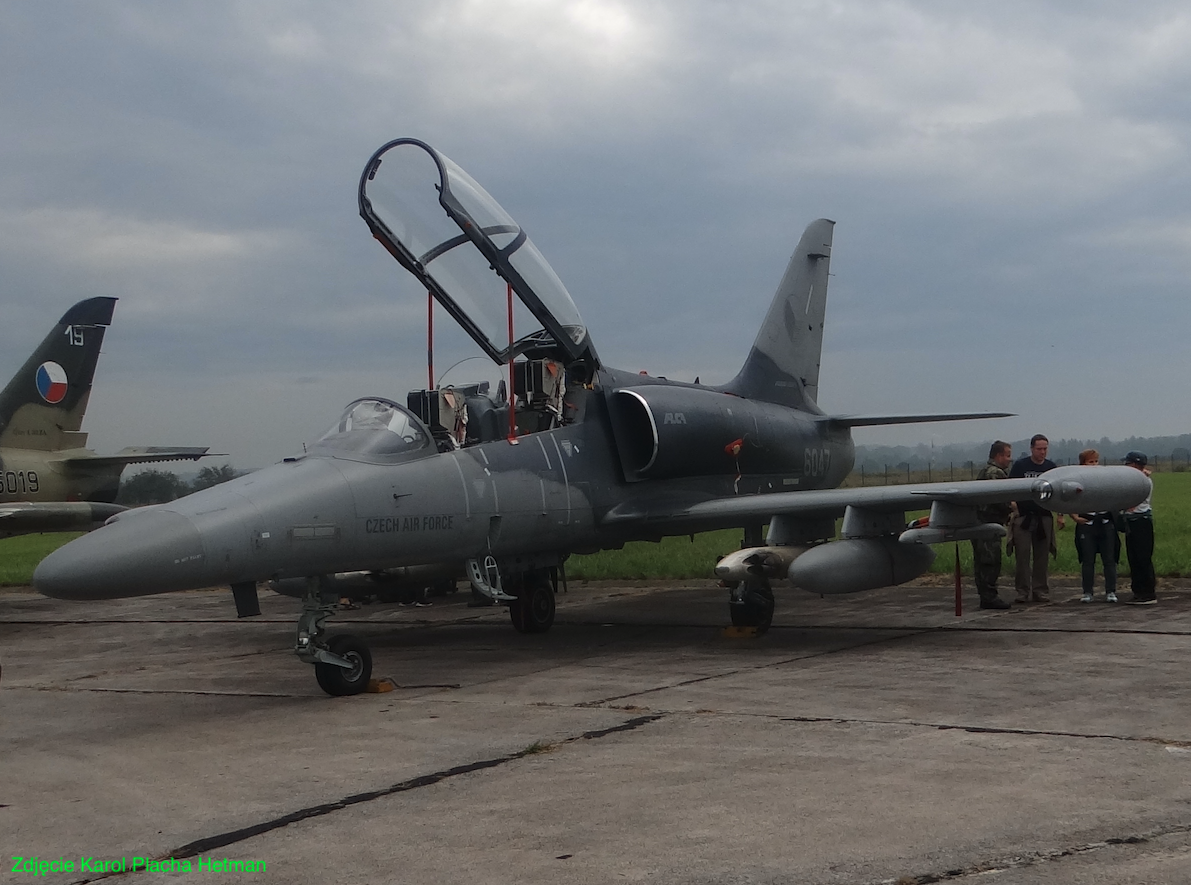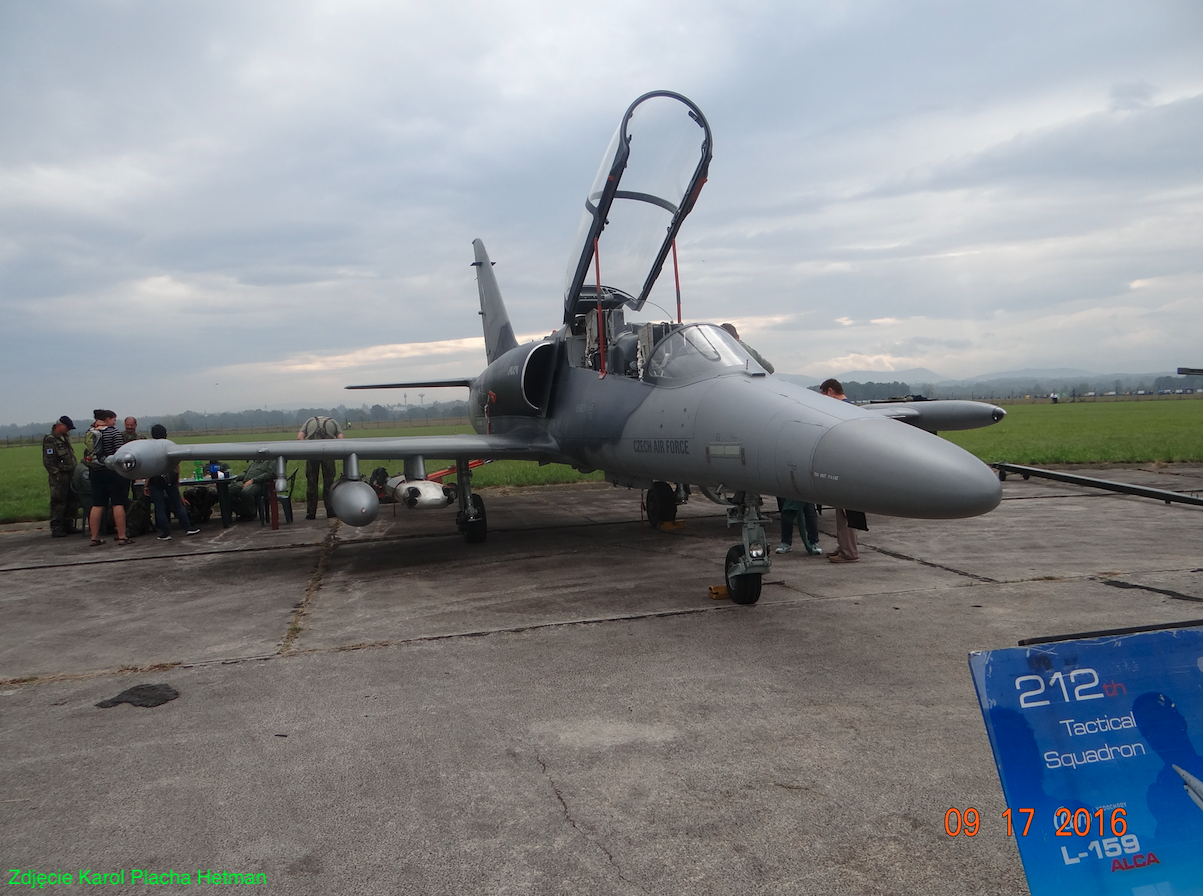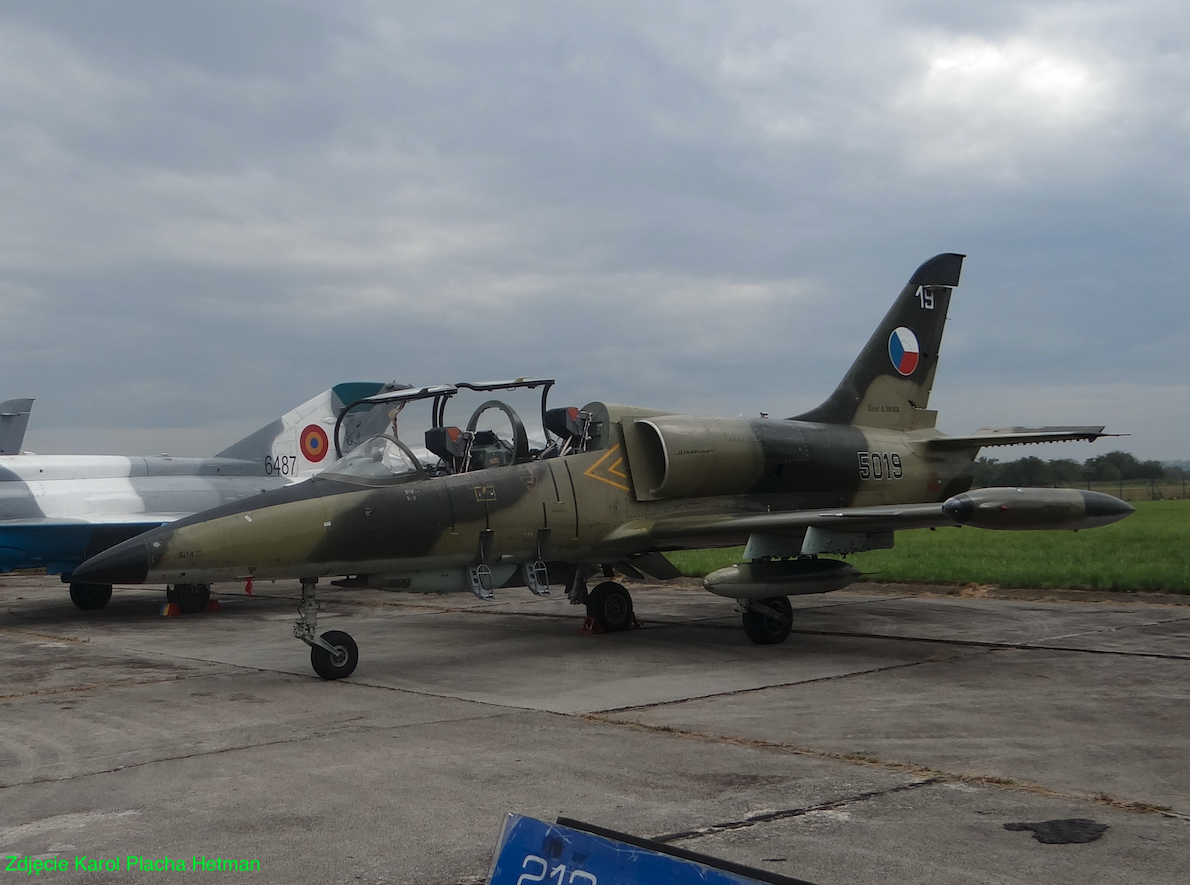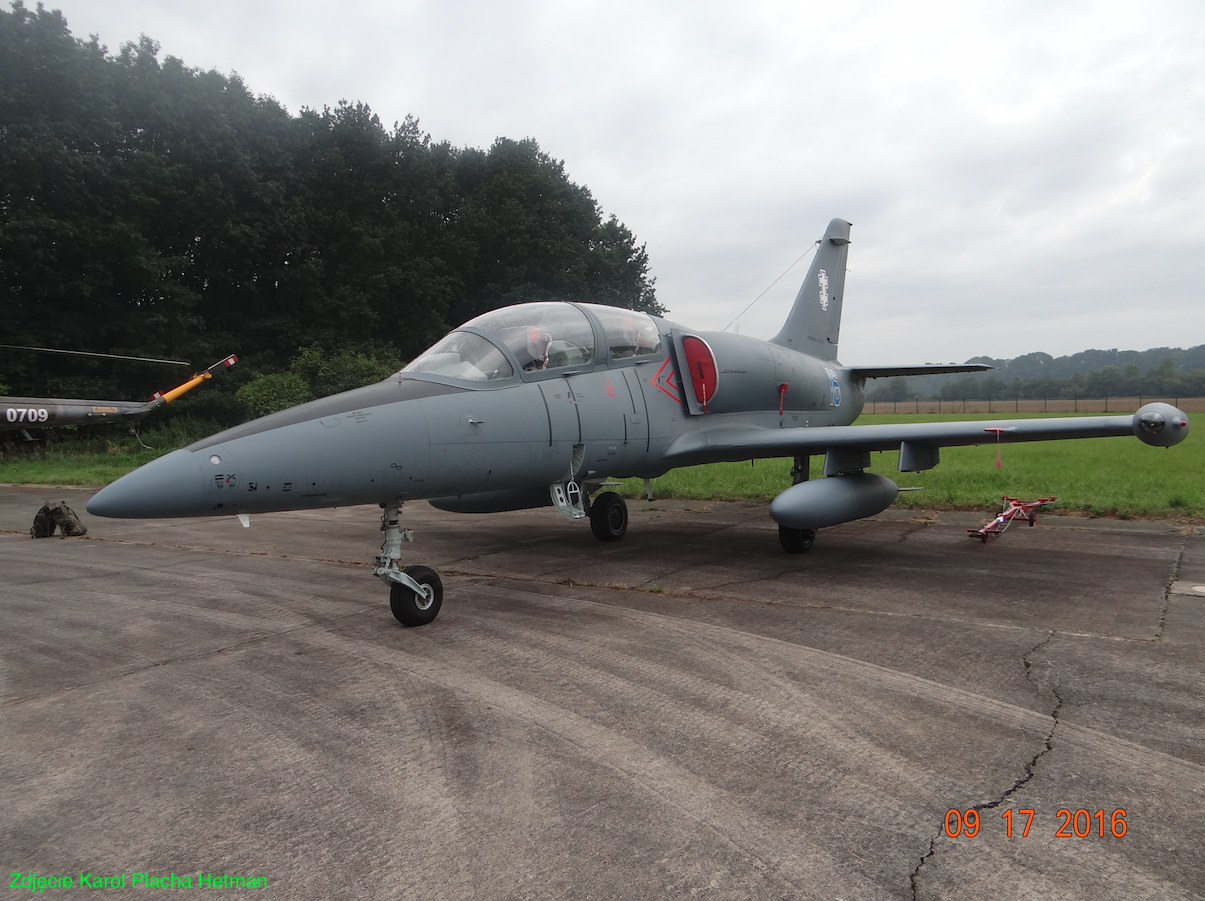Warszawa 2023-04-08
Aero L-159 for the Polish Army.
The Aero L-159 is a light attack and advanced training aircraft manufactured in the Czech Republic. The aircraft has a Western engine; Honeywell F-124-GA-100, 28.20 kN thrust and Western avionics. The aircraft is single or two-seater, depending on the version.


History.
In 2010, during the reign of Prime Minister Donald Tusk, the need to purchase a light combat aircraft for the Polish Army arose. It was then that the competition for the LIFT plane was opened, which turned out to be a fictional competition. It should be remembered that two years earlier, in 2008, the Liberal Prime Minister Donald Tusk sent 28 PZL Mielec I-22 Iryda aircraft for scrap. The documentation of the PZL I-22 Iryda aircraft was taken by the army and destroyed. The copies of the documentation at PZL Mielec were burned, and the templates and templates were destroyed.
The PZL I-22 machine was probably the last training and combat aircraft developed by Polish constructors. A plane that was needed on the one hand and unwanted on the other. Following his more than 20-year career, one gets the impression that he was raped and then had an abortion.
The I-22 Iryda program collapsed because high-profile Polish politicians, known by name, did not want a Polish plane. First, they blocked the inflow of funds, and then systematically liquidated the Polish Aviation Industry. The fact that the aircraft was a good construction is evidenced by the fact that during its history it was examined thirteen times by various commissions and other institutions, and none of them ordered the discontinuation of further work. Not excluding two post-accident commissions (1987 and 1996).
It is worth mentioning that the Program of the Polish advanced training aircraft PZL I-22 Iryda cost from 1978, i.e. over 20 years, according to various estimates, from PLN 600 million to USD 500 million, the average is USD 300 million, i.e. USD 1.2 billion PLN, although this number must be considered approximate. However, one has to agree with the opinions that compared to other jet trainer and combat aircraft programs brought to the stage at which the Iryda project was completed, it was a low amount. Nearly 28 aircraft became the unwanted children of Polish Industry. Only a few museums and the city of Mielec were interested in it. The rest of the aircraft was scrapped in the spring of 2008 in Kutno. If the aircraft remained in the Polish Army, it would not be necessary to announce a competition for the LIFT aircraft. The aircraft had Polish K-15 engines and Western avionics by Sagem (France).
LIFT level.
LIFT level, i.e. Lead In Fighter Trainer, and in free translation training of future fighter pilots. In other words - the Integrated Training System for Air Personnel of the Polish Armed Forces. In 2010, one of the aircraft offered to the Polish Army was the Czech Aero L-159 Albatros 2.
The history of the aircraft from the Czech Aero L-159 Albatros 2.
The Aero L-159 aircraft (Aero Vodochody a.s.) is a continuation of the L-29 Delfin and then the L-39 Albatros. The Aero L-39 Albatros aircraft was built by Aero Vodochody when Czechoslovakia still existed. The first flight was made on November 4, 1968. The production of the aircraft was carried out in the period 1971 - 1999. The first serial aircraft entered the service of Czechoslovakia, CCCP and Warsaw Pact countries, with the exception of Poland. Other users: Afghanistan, Bangladesh, Bulgaria, Ethiopia, Iraq, Cuba, Libya, Lithuania, Nigeria, East Germany, Romania, Syria, Thailand, Hungary, Vietnam, Kyrgyzstan. A total of 2,800 were built.


Data T-T Aero L-39 Albatros:
Progress AI-25TL turbojet engine, 1,687 daN thrust. Span 9.46 m. Length 12.13 m. Height 4.77 m. Bearing area 18.8 m2. Curb weight 3,565 kg. Payload 1,535 kg. Take-off weight 5,100 kg. Weapon weight 1,100 kg. Fuel supply 1,255 liters. Top speed 750 km/h. Cruising speed 680 km/h. Landing speed 175 km/h. Climb speed 22 m/s. Ceiling 11,500 m. Range 1,100 km.
Armament: 1 x 23 mm GSz-23 cannon or 7.62 mm machine gun, K-13 air-to-air infrared guided missiles, 4 bombs or cluster bombs, 4 unguided missile pods, additional fuel tanks.
In 1993, the Aero L-139 aircraft was built. It was an L-39 C aircraft (without armament), which received Western avionics and a Garrett TFE731 engine. The first flight was made in 1993.
The next aircraft was the Aero L-159 A, which then received the additional designation ALCA, i.e. "Advanced Light Combat Aircraft". The aircraft was created in cooperation with companies operating in the USA, including Boeing. The structure of the aircraft was improved and larger fuel tanks were placed in it. The forward fuselage was rebuilt to accommodate new equipment, including Galileo Grifo Doppler radar, and was powered by a 28.20 kN Honeywell F-124-GA-100 engine.
On the basis of the Aero L-159 ALCA aircraft, a single-seat version was created, which was already typically assault and advanced training. The aircraft was designated L-159 T1/B. The entire armament of the aircraft is carried on 6 hooks under the wings and one under the fuselage. The weight of the armament is 2,340 kg.
The L-159 ALCA "Advanced Light Combat Aircraft" aircraft made its first flight on August 4, 1997. Its production lasted from 1997 to 2004, and after a break in 2015. The aircraft is used in the Czech Republic and Iraq. Additionally, Draken International from The USA, which provides services to the US Department of Defense, took delivery of the first Aero L-159 of the 21 aircraft ordered on September 30, 2015. The planes are used to simulate the enemy in military exercises.In addition, Lewis Fighter Fleet LLC with USA, which in 2013, through EADS CASA, purchased 3 L-159 A aircraft.
In 2010, the Czechs offered Poland the opportunity to create an AERO L-159 B PL aircraft that would be adapted to the needs of the Polish Army. However, at the beginning of July 2011, the Czechs withdrew from the tender.
T-T Aero L-159 Alca data:
Honeywell F-124-GA-100 engine, 28.20 kN thrust. Span 9.54 m. Length 12.72 m. Height 4.77 m. Curb weight 4,320 kg. The weight of the armament is 2,340 kg. Top speed 960 km/h. Ceiling 13,200 m. Range 1,570 km.
Written by Karol Placha Hetman
